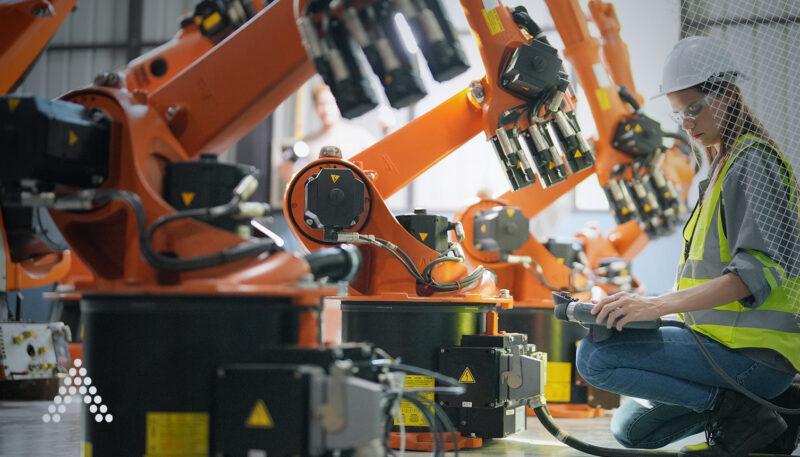If we’re all so busy, why isn’t anything getting done?
From MZ Manufacturer magazine, March 2024
Have you ever asked why it’s so difficult to get things done in business today—despite seemingly endless meetings and emails? Why it takes so long to make decisions—and even then not necessarily the right ones?
You’re not the first to think there must be a better way. Many organisations address these problems by redesigning boxes and lines: who does what and who reports to whom.
This exercise tends to focus almost obsessively on vertical command relationships and rarely solves for what, in our experience, is the underlying disease: the poor design and execution of collaborative interactions.
In our efforts to connect across our organisations, we’re drowning in real-time virtual interaction technology, from Zoom to Slack to Teams, plus group texting, WeChat, WhatsApp, and everything in between. There’s seemingly no excuse to not collaborate.
The problem? Interacting is easier than ever, but true, productive, value-creating collaboration is not. And what’s more, where engagement is occurring, its quality is deteriorating. This wastes valuable resources, because every minute spent on a low-value interaction eats into time that could be used for important, creative, and powerful activities.
Three critical collaborative interactions
- Decision making, including complex or uncertain decisions (for example, investment decisions) and cross-cutting routine decisions (such as quarterly business reviews)
- Creative solutions and coordination, including innovation sessions (for example, developing new products) and routine working sessions (such as daily check-ins)
- Information sharing, including one-way communication (video, for instance) and two-way communication (such as town halls with Q&As)
Decision making: Determining decision rights
When you’re told you’re “responsible” for a decision, does that mean you get to decide? What if you’re told you’re “accountable”? Do you cast the deciding vote, or does the person responsible? What about those who must be “consulted”?
Sometimes we are told input will be reflected in the final answer—can a decision be vetoed if input is not fully considered?
It’s no wonder one of the key factors for fast, high-quality decisions is to clarify exactly who makes them. Consider a success story at a renewable-energy company. To foster accountability and transparency, the company developed a 30-minute “role card” conversation for managers to have with their direct reports.
As part of this conversation, managers explicitly laid out the decision rights and accountability metrics for each direct report.
The result? Role clarity enabled easier navigation for employees, sped up decision making, and resulted in decisions that were much more customer focused.
Creative solutions and coordination: Open innovation
Routine working sessions are fairly straightforward. What many organisations struggle with is finding innovative ways to identify and drive toward solutions. How often do you tell your teams what to do versus empowering them to come up with solutions?
While they may solve the immediate need to “get stuff done,” bureaucracies and micromanagement are a recipe for disaster.
They slow down the organisational response to the market and customers, prevent leaders from focusing on strategic priorities, and harm employee engagement.
Case Study
Take Haier. The Chinese appliance maker divided itself into more than 4,000 microenterprises with ten to 15 employees each, organised in an open ecosystem of users, inventors, and partners (see sidebar.
This shift turned employees into energetic entrepreneurs who were directly accountable for customers. Haier’s microenterprises are free to form and evolve with little central direction, but they share the same approach to target setting, internal contracting, and cross-unit coordination.
Empowering employees to drive innovative solutions has taken the company from innovation-phobic to entrepreneurial at scale.
Since 2015, revenue from Haier Smart Home, the company’s listed home-appliance business, has grown by more than 18 percent a year, topping 209 billion renminbi ($32 billion) in 2020. The company has also made a string of acquisitions, including the 2016 purchase of GE Appliances, with new ventures creating more than $2 billion in market value.
Empowering others doesn’t mean leaving employees alone
Successful empowerment, counterintuitively, doesn’t mean leaving employees alone. Empowerment requires leaders to give employees both the tools and the right level of guidance and involvement.
Leaders should play what we call the coach role: coaches don’t tell people what to do but instead provide guidance and guardrails and ensure accountability, while stepping back and allowing others to come up with solutions.
Haier was able to use a variety of tools—including objectives and key results (OKRs) and common problem statements—to foster an agile way of working across the enterprise that focuses innovative organizational energy on the most important topics.
Not all companies can do this, and some will never be ready for enterprise agility. But every organisation can take steps to improve the speed and quality of decisions made by empowered individuals.



